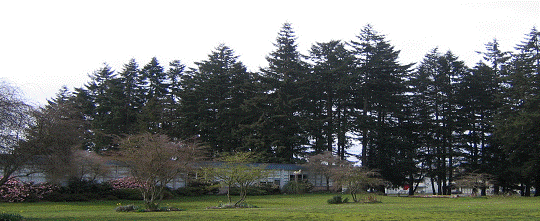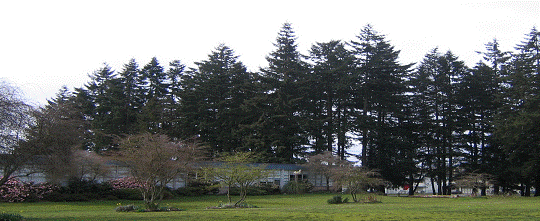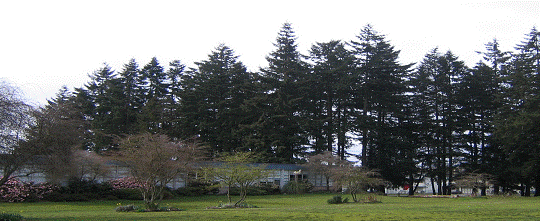The Republican Party is out to try to fool the American public again. Remember compassionate conservatism? With John McCain -the Republican Party is trying to sell us more snake oil in the form of an attack ad on Obama that touts McCain’s “balanced” energy plan and accuses Obama of “no new solutions”. In reality MCCain is the one with no new solutions.
According to the first major ad by the Republican National Committee supposedly done independently of the McCain Campaign, McCain’s going to solve our energy problems now with a “balanced” plan that pushes “more production at home”. This translates to opening up our beaches and coastline for off shore oil drilling and more nuclear power plants for which there still is no long term solution to dealing with the nuclear waste.
And he’s still touting his pandering proposal to suspend the Federal gas tax this summer, which unfortunately would remove money for repairing decaying roads and bridges. Of course such an approach would encourage people to drive more, not less, which is counter to his professed concern about “a climate in crisis” Drilling for more oil and suspending needed gas taxes are retro proposals from the Bush Era that are not real solutions to our energy and climate problems.
Of course the Republican ad campaign slips in the words “alternative energy and conservation” sort of like politicians slip in the words “God bless America” when ever they can but let’s look at the record. McCain has offered no new solutions to the energy problem – just a recycling of old Republican campaign tactics of mouthing vague generalities that may have some resonance with the public but which lack specifics to really evaluate.
For example the Detroit Free Press recently reported on McCain”s plan for fuel efficiency for cars and trucks. They noted that “the Republican’s proposals lacked key details” and that his “comments lead to confusion”.
“McCain said that to boost development of hybrids and electric vehicles, he would launch a $300-million award for a battery pack “that has the size, capacity, cost and power to leapfrog the commercially available plug-in hybrids or electric cars.”
The senator offered no other details, leaving some observers confused about his intent. There are no commercially available plug-in hybrid vehicles today, and the few electric vehicles on the market range from low-power minicars using traditional batteries to the Tesla Roadster, a $100,000 two-seater that uses lithium-ion cells found in computers and other devices.
The McCain campaign said the point of his proposals was to spur change, and that the method for meeting whatever goals he would set for the industry was less important.
“John McCain is not interested in knowing the details of the fuels that go in” to vehicles “and the technologies that process them,” said adviser Doug Holtz-Eakin. “What matters is: Do you get effective transportation with low carbon emissions coming out the tailpipe? Let the best technologies, the smartest invention, win.”
Sounds like John McCain supports the free market approach – no surprise here, but that’s what got us into the mess we’re in now. Change just for the sake of change is not what we need. One prime example is that we are now coming to realize that increased ethanol production can come with a lot of other problems, like increased costs for food. We need to understand the consequences of what we do so that we can make better choices. We need a President and Administration that understands that.
The free market approach, like John McCain espouses, works to optimize profits for corporations. Unfortunately corporate interests often conflict with national interests like conservation of fuels and resources for sustainability, reduced dependence on foreign oil and shifting to a carbon free economy that reduces global warming impacts. We need a President that works to promote the interests and well being of all the the citizens of our country, not just the profits of big corporations.
Just as John McCain is no economist he is also not an engineer or a scientist. John McCain’s voting record on energy and environmental issues is dismal. While most Democrats assume decisive action needs to be taken to deal with global warming , John McCain is getting a special break with the Press and Media because he is a Republican exposing some of these views.
Yet McCain’s voting record really belies this supposed message of someone looking for solutions. John McCain’s lifetime voting record with the League of Conservation Voters is just 26%. By contrast Ron Paul’s lifetime average is 30%.
Barack Obama’s League of Conservation Voter record is 96%. Hillary Clinton’s lifetime average was 90%. Dennis Kucinich’s was 92%.
You can also view a comparison of Obama’s and McCains positions on energy done by Bob Deans of the Cox News Service at the Dayton Daily News. While John McCain proposes reducing carbon emissions by 60% by 2050, Barack Obama proposes reducing them by 80%. While Barack Obama proposes a target of 25% of our electricity needs being met by renewable energy by 2025, John McCain would rather we commit to building 45 nuclear power plants by 2030.
Another way of viewing McCain and Obama’s commitment to energy and environmental issues is to view how they responded to votes in Congress, including missed votes while they were campaigning. As the Center for American Progress’s Action Fund notes, John McCain has a poor record on Energy and Global Warming issues. They note that on numerous occasions McCain voted for legislation supporting big oil companies and against renewable energy and increased efficiency standards.
McCain for example had an opportunity to cast a decisive vote in 2007 for renewable energy legislation but sided with Big Oil. As the Center for American Progress notes:
In 2007, McCain was the only senator who failed to vote on a motion to invoke
cloture (thus limiting debate) on the Energy Independence and Security Act. This
vote was about whether to close $13 billion in tax breaks for major oil and gas
companies to invest in new clean energy technologies such as wind and solar, and
efficiency. Sixty votes were required for passage. The motion was rejected
59-40. [CQ.com; HR 6, Vote #425
One needs only to look at the record to realize McCain’s spoken word of wanting energy security and energy independence and conservation and on and on is only hot air and lacks substance. His actual voting record and missed opportunities to make a difference speak louder than anything else. McCain is at heart a Republican and Republicans as a whole are beholden to big corporations and big oil.
The only change McCain is doing is running away from previous positions like opposing off shore oil drilling which gave him some independence from most other conservative Republicans. To win the election he believes he has to cater to traditional Republican conservative voters. As such he is giving up his name brand maverick positions.
McCain is becoming just another conservative, knee jerk reacting to the problems facing America and uttering platitudes. We need fresh ideas and a new vision and leadership to solve our energy problems and respond to global warming. McCain unfortunately will take us back to the past when it is the future we need to deal with.







